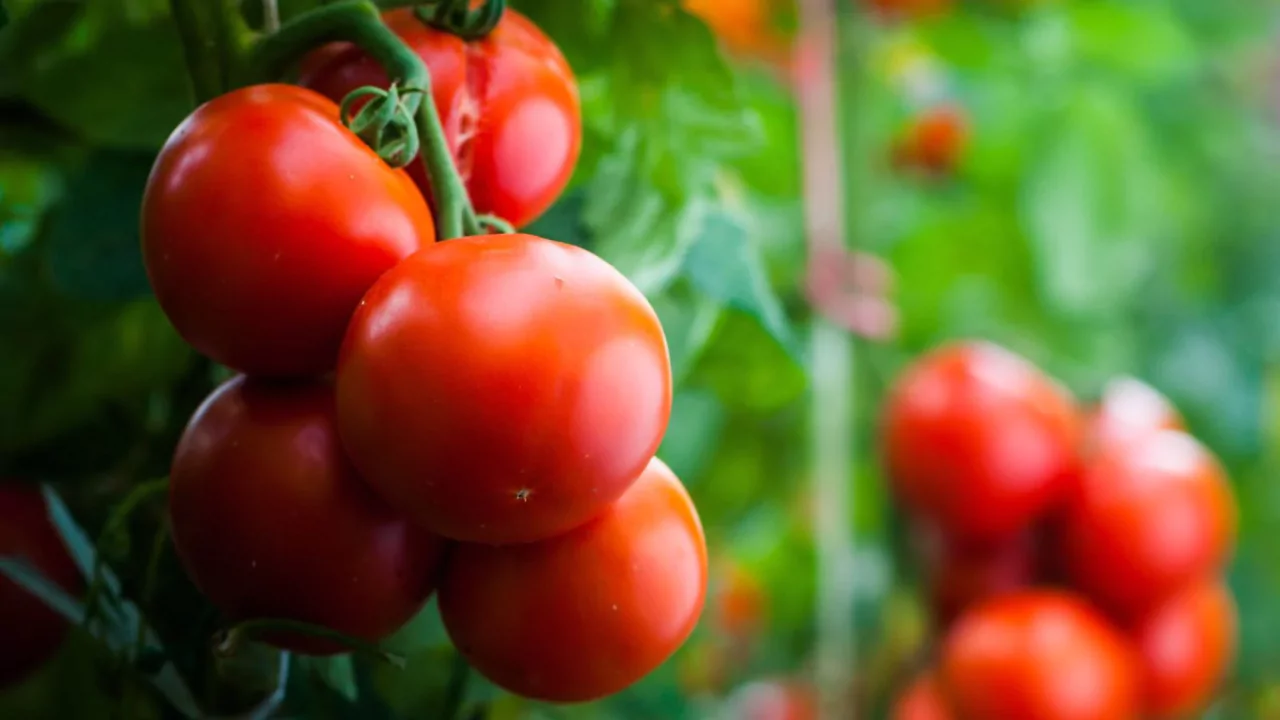
The tomato plant Solanum lycopersicum originated in South America. It was first cultivated by the Aztecs, who incorporated the juicy red fruit into their cooking. Today, its use has spread globally, with approximately 7500 varieties cultivated. Some of the common names include Early Girl, Better Boy, Roma, Sungold, and Brandywine.
The list of tomato species is endless, including red and yellow, round and oblong, big and small. It is best to check your area to see which tomato type would flourish.
Tomato plants are usually divided two ways: determinate (bush) tomatoes and indeterminate (vine) tomatoes. The determinate variety stops growing after reaching a specific height, at which point they start flowering and bearing fruit.
In contrast, indeterminate tomatoes tend to have abundant foliage and fruit and will keep growing and producing until frost. Many gardeners plant both types to enjoy the advantages offered by each of the varieties.
Thus, in order for you to make an informed decision on which of the two types of tomatoes would best fit your garden, I have gathered some additional insights around the two characteristics.
Determinate Tomatoes (Bush)
Depending on the type of tomato, the height of determinate tomatoes varies. While some dwarf varieties only grow 2-3 feet tall, others can reach heights of up to 5 feet. These tomatoes are particularly useful for container gardens, as they can easily be grown on porches or patios.
In fact, bush tomatoes do best in places where they are given ample space between plants, and a pot is the best option. For very small spaces, dwarf varieties are especially useful as they are more compact compared to other types. However, larger varieties may need staking for support.
Bush tomatoes are particularly useful in small spaces. Likewise, they are important for patio gardeners. Though these tomatoes are usually easy to grow, they bear fruits at once. With about a month of growing duration, the fruits are ready to be picked.
On a single branch, tomatoes ripen in a span of few days. Blooms also form on tip of sections right before branching off. Therefore, all of the tomatoes on the plant, including the fully grown ones, can be harvested after a month.
Determinate tomatoes are a good fit for commercial growers who want to harvest all at once, as they are optimal for home gardeners who want to can tomatoes or prepare bulk portions for salsa and sauce. Continuous harvest throughout the season is possible with staggered planting and selecting varieties with differing maturity dates.
Indeterminate Tomatoes (Vine)
Vining, or indeterminate, varieties of tomatoes give an equally different experience for home and commercial use. These plants are, for one, able to attain up to 15 feet and continuously grow and produce throughout the season.
Like all living things, they do require some care such as trellises or vertical supports. These types of tomatoes can also be grown in small spaces, especially the dwarf varieties which are more compact compared to others and have less sprawling growth.
Vine tomatoes serve a different purpose compared to bush tomatoes. They are harvested gradually once ripening begins, and flowering occurs at various intervals along the vine.
Indeterminate tomatoes are typically preferred in kitchen gardens, as they allow home chefs to harvest a few tomatoes at a time for salads or sandwiches. For home gardeners, this slower pace of harvesting is ideal as they do not have to deal with a large quantity all at once.
As an aside, some varieties known as vigorous determinates or semi-determinates exist. These are determinates that produce a single crop, then re-flower and produce a second crop.